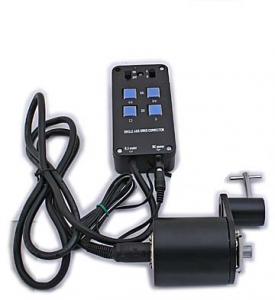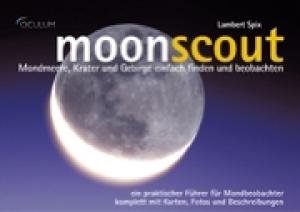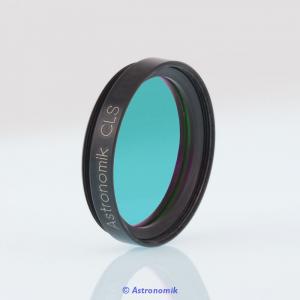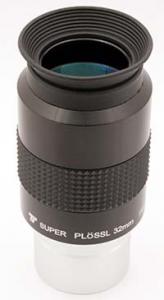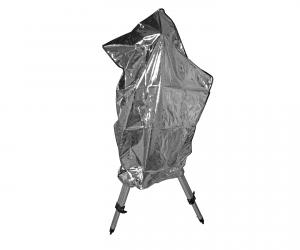- Telescopes
- Overview:
Telescopes - Achromatic Refractor
- Apochromatic Refractor
- Overview:
Apochromatic Refractor - ED Refractor - less color aberration than an achromatic
- SD APO - color free 2-element APO objective
- EDT APO - 3 element ED objective
- High End APO with 3-element APO objective - no color aberation
- Flatfield APO with flat field for Astrophotography
- All Apos and EDs from all manufacturers - large overview
- TS APO and ED from Japan with high quality optics
- Overview:
- Newtonian Telescopes
- Dobsonian Telescopes
- RC Ritchey Chretien Telescopes
- Casssegrain Telescopes
- Reflektor Telescopce with Lens Correcture
- Maksutov Cassegrain Telescopes
- GoTo Telescopes
- Solar Telescopes H-Alpha
- Overview:
- Mounts Tripods Rings Rails Power Supply ...
- Overview:
Mounts Tripods Rings Rails Power Supply ... - Mounts Equatorial with GoTo
- Mounts Equatorial without GoTo
- Mounts Azimutal with GoTo
- Mounts Azimutal without GoTo
- Mounts GoTo - Harmonic Drive
- Travel mounts for astro imaging
- Tripods Piers Polar Wedges
- Mount Control & Electronics
- Dovetail Clamps, Plates and Mount Adapters
- Tube Rings
- Power Supply
- Counterweights Balance Weights
- Mount Accessories - Other
- Overview:
- Telescope Accessories
- Overview:
Telescope Accessories - Eyepieces
- Barlows & Reducer Lenses
- Diagonal Mirrors and Prisms
- Binocular Viewers
- Finder Scopes
- Telescope Collimation and Test
- Cleaning Tools
- Transport and Storage
- Dust protection for Telescopes & Accessories
- Stray Light Protection
- Dewcaps and Heater
- Focusers, Adapters, Motorfocus
- Telescope DIY & Improvement
- Other telescope accessories
- Replacement Parts
- Overview:
- Filters
- Overview:
Filters - Color Filters and Color Filtersets
- Nebular Filters for Visual Observing
- Neutral-Density and Polfilter
- Photo Narrowband Nebular Filters
- Photo Broadband Filters
- Photo Planetary Filters
- Photo R-G-B and IR Cut Filters
- Photo - Filtersets
- Photometric Filters
- Clip Filter for DSLR Cameras
- Filter Wheels and Filterslider
- Solar Filters for white light
- Solarfilter for H-Alpha and Calcium
- Overview:
- Adaptors
- Overview:
Adaptors - Adapter 1,25" and 24,5mm
- Adapter 2"
- Adapter T2 - M42x0.75
- Adapter M48x0,75
- Adapter M54
- Adapter SC
- Adapter M63
- Adapter M68
- Adapter to other Threads
- Adapter Extensions
- Adapter camera bayonet
- Adapter Objective Filterthread
- Adapter Quick Changing , Rotation
- Adapter Eyepiece Projection
- Adapters Tilting
- Overview:
- Astrophotography and Photography
- Overview:
Astrophotography and Photography - Cooled Cameras
- Cameras without Cooling
- Deep-Sky Cameras uncooled
- Set-Offers Camera, Filter, Wheels
- Acessories for Cameras
- Travel mounts for astro imaging
- Imaging Correctors for Telescopes
- Autoguiding Cameras & Sets
- Everything for Guiding
- Focusing aids - Bahtinov mascs
- Flat Field foils and boxes
- Lenses for Cameras
- Piggyback Camera Holder
- Camera Bags, Photocases & more
- Digital Camera and Smartphone Adapter
- Other photo accessories
- Overview:
- Binoculars, Spotting Scopes, Microscopes, Range Finders
- Overview:
Binoculars, Spotting Scopes, Microscopes, Range Finders - Spotting Scopes and Acessories
- Roof Prism Binoculars
- Binoculars with Porro prisms
- Binoculars from 100mm Aperture
- Binoculars with 1,25 inch eyepieces
- TSMX APO Binoculars
- Binoculars for Astronomy
- Binoculars Hiking Bird watching
- Monoculars - Opera Binoculars
- Accessories for Binoculars
- Range Finders
- Microscopy
- Bags for Phototripods & Binoculars
- Overview:
- Phototripods and Binomounts
- Books, Software
- Overview:
Books, Software - Books for Astronomy Beginners
- Star Charts and Planispheres
- Books about our Solar System
- Observing Tips for Amateurs
- Popular Astronomy Literature
- Teaching material
- Astrophotography books
- Telescopes, Observatories, Construction
- Calendars Yearbooks
- Software, Star Charts
- Books for Microscopers
- Books Nature and Animals
- Nature Photography TimeLapse
- Overview:
- Night Vision, Magnifiers, Weather, Domes & more
- Beginner Astronomy and Gift Ideas
- Second Hand & Special Offers
- New products
Manufacturer: -TS Teleskope
Product number: Megastar1550
EUR219.00new
EUR 219,00RRP EUR 349,00you save 37.2% (EUR 130,00)
incl. 19 % VAT (DE)
The VAT indicated refers to that applicable in Germany. After logging in, the VAT amount is adjusted to the applicable VAT of the stored delivery country. Therefore, the final price may vary accordingly.
excl. 13.95 € shipping costs (DE)
more details to the shipping costs ...Please log in to calculate shipping costs to your country.
rating: 4.0 of 5TS-Optics Megastar1550 - 150/1400 mm beginner telescope on EQ3-1 mount1
- Details..
- Technical data..
- In the box..
- Manufacturer infos..
- Safety informations..
More light makes discerning details easier:
This powerful scope is a solid base for the successful observation of objects beyond the solar system. 150 mm aperture collects more than twice the light of telescopes with 100 mm aperture. Hence you can see twice as much light.
The strength of the Megastar 1550 lies beyond the solar system:
The Megastar 1550 is designed for a successful observation of faint celestial objects. Along with this, the scope is very compact. This compactness is achieved by an additional lens in the optical path. The advantage is the compact layout, which helps also for the mechanical stability. For the moon or planets this lens adds some aberrations and reduces the use of the telescope slightly in contrast with a layout without this additional lens. Hence the Megastar is an instrument for stargazers who want a powerful instrument for nebulae, clusters and galaxies without having to spend about twice the price for a conventional Newtonian of the same aperture.
Observing with the Megastar 1550:
Albeit the Megastar 1550 is more suitable for nebulae, star clusters and galaxies, it shows also some detail in our solar system. The performance can be compared with the popular 114 mm Newtonian of 900m m focal length.
The pictures to the left visualize approximately what you can expect. However, the colours are only visible in photographs, as the human eye is too insensitive to see colours of that saturation at night.

The moon:
Due to the large aperture of 150 mm, the brightness of the lunar surface is impressive. You may prefer to use a lunar filter to dampen it down a bit. You can see how the lunar surface is full of craters, mountains and cracks.

The planets:
The ring of Saturn, atmospheric structures on Jupiter, the phases of Venus and much more are visible.

Star clusters of our Milky Way:
Hundreds of stars glitter in the field of view – the large aperture helps resolving even dim clusters into single stars.

Nebulae and galaxies:
Here aperture is the most important factor. Look inside of the Great Orion Nebula and see first structures.
Can I see colours?
Normally colours are just visible by photography, but due to the large aperture you may get a first idea about how colourful the space is. Look at Albireo in Cygnus to resolve this double star at medium power range. The brighter component shines in a warmly-yellow colour in contrast to the cold blue of the fainter component.
Photography:
The Megastar 1550 is already prepared for the first steps in astrophotography. With the camera specific T2 ring or the Digiclamp 1 (see recommended accessiories) you can connect your camera to the scope. The moon and planets may be imaged that way.

EQ3-1 - a solid mount is the base:
The parallactic mount EQ3-1 is a useful base for the telescope. The mount holds the scope with a good stability.
The mount offers advanced features as: polar height fine adjustment - assures a higher accuracy mount separable from tripod, easier transport well dimensioned field tripod manual slow motion via flexible knobs possibility to upgrade to motor drive
(see “recommended accessories”)

The 1.25" Focuser:
This component is particular important for a telescope. It accepts the various eyepieces needed for different magnification, and allows fine focusing. The Megastar 1550 has a 1.25” focuser which is common standard, hence the telescope is compatible to many accessiories which will come in handy in the future.
The large accessory kit included:
Only with the correct accessories a telescope can be utilized to its full potential. The Megastar 1550 convices by the large set of accessories included: 1,25" Plössl eyepiece of 25 mm focal length for 56x (Overview and large objects) 1,25" Plössl eyepiece of 6,5 mm focal length for 215x (maximum power) 2x Barlow lens to double magnification 1,5x erecting lens for terrestrial views (puts the image upright) 6x30 optical finder Lunar filter to dampen the lunar surface brighness which may be dazzling at low power
This powerful scope is a solid base for the successful observation of objects beyond the solar system. 150 mm aperture collects more than twice the light of telescopes with 100 mm aperture. Hence you can see twice as much light.
The strength of the Megastar 1550 lies beyond the solar system:
The Megastar 1550 is designed for a successful observation of faint celestial objects. Along with this, the scope is very compact. This compactness is achieved by an additional lens in the optical path. The advantage is the compact layout, which helps also for the mechanical stability. For the moon or planets this lens adds some aberrations and reduces the use of the telescope slightly in contrast with a layout without this additional lens. Hence the Megastar is an instrument for stargazers who want a powerful instrument for nebulae, clusters and galaxies without having to spend about twice the price for a conventional Newtonian of the same aperture.
Observing with the Megastar 1550:
Albeit the Megastar 1550 is more suitable for nebulae, star clusters and galaxies, it shows also some detail in our solar system. The performance can be compared with the popular 114 mm Newtonian of 900m m focal length.
The pictures to the left visualize approximately what you can expect. However, the colours are only visible in photographs, as the human eye is too insensitive to see colours of that saturation at night.

The moon:
Due to the large aperture of 150 mm, the brightness of the lunar surface is impressive. You may prefer to use a lunar filter to dampen it down a bit. You can see how the lunar surface is full of craters, mountains and cracks.

The planets:
The ring of Saturn, atmospheric structures on Jupiter, the phases of Venus and much more are visible.

Star clusters of our Milky Way:
Hundreds of stars glitter in the field of view – the large aperture helps resolving even dim clusters into single stars.

Nebulae and galaxies:
Here aperture is the most important factor. Look inside of the Great Orion Nebula and see first structures.
Can I see colours?
Normally colours are just visible by photography, but due to the large aperture you may get a first idea about how colourful the space is. Look at Albireo in Cygnus to resolve this double star at medium power range. The brighter component shines in a warmly-yellow colour in contrast to the cold blue of the fainter component.
Photography:
The Megastar 1550 is already prepared for the first steps in astrophotography. With the camera specific T2 ring or the Digiclamp 1 (see recommended accessiories) you can connect your camera to the scope. The moon and planets may be imaged that way.

EQ3-1 - a solid mount is the base:
The parallactic mount EQ3-1 is a useful base for the telescope. The mount holds the scope with a good stability.
The mount offers advanced features as:
(see “recommended accessories”)

The 1.25" Focuser:
This component is particular important for a telescope. It accepts the various eyepieces needed for different magnification, and allows fine focusing. The Megastar 1550 has a 1.25” focuser which is common standard, hence the telescope is compatible to many accessiories which will come in handy in the future.
The large accessory kit included:
Only with the correct accessories a telescope can be utilized to its full potential. The Megastar 1550 convices by the large set of accessories included:
English manual:
Teleskop-Service has a manual available in English, you can download the PDF file here.| Optics: | Newtonian reflector with built-in corrector lens |
| Aperture: | 150 mm |
| Focal Length: | 1400 mm |
| Resolution: | about 0.85" |
| Limiting Magnitude: | 13.6 mag |
| Focuser: | 1.25" Rack & Pinion Focuser |
| Mount: | German style equatorial mount EQ3-1 with manual slow motion in both axes |
| Tripod: | Height adjustable to 120 cm, aluminium |
| Weight Tube with finder: | 4 kg |
| Weight Mount with tripod and counterweight: | 7 kg |
| Manufacturer / Importeur: | Teleskop-Service Ransburg GmbH |
| Street: | Von-Myra-Str. 8 |
| ZIP / City: | 85599 Parsdorf |
| Country: | germany |
| Telefon number: | +49 89 99228750 |
| Email: | info@teleskop-service.de |
| Website: | www.teleskop-express.de |
Safety informations: PDF Download
Recommended accessories
Accessories for mounts
Barlow, Corrector, Reducer
TS-Optics 2x Barlow Lens achromatic 1.25" with T2 Photo Connector
EUR 19,90RRP EUR 36,00you save 44.7% (EUR 16,10)
Books
Celestron Astronomy Software and Star Charts Program The Sky Level 1
EUR 9,90RRP EUR 19,90you save 50.3% (EUR 10,00)
Cleaning & Collimating
TS-Optics Optical Super Microfiber Cleaning Cloth
EUR 4,99RRP EUR 7,95you save 37.2% (EUR 2,96)
Customers who bought this product also bought...
Eyepiece-side accessories like Filters
TS-Optics 1.25" Grey Filter ND 09 - 13% Transmission - Neutral Density
EUR 19,90RRP EUR 24,90you save 20.1% (EUR 5,00)
Eyepieces
TS-Optics 1.25" Zoom Eyepiece 7-21 mm with Photo Thread
EUR 58,00RRP EUR 69,00you save 15.9% (EUR 11,00)
TS-Optics 1.25" Eyepiece Set with Barlow and Filters - 8 Items in Case
EUR 119,00RRP EUR 159,00you save 25.2% (EUR 40,00)
Finder & Accessories
General Accessories
TS-Optics dimmable LED Flashlight with red and white light
EUR 23,90RRP EUR 24,95you save 4.2% (EUR 1,05)
TS-Optics 8x40 LE Wide Field Porro Binoculars - multi coated - rubber armoured
EUR 74,00RRP EUR 89,00you save 16.9% (EUR 15,00)
Photo Acessories
Digiklemme 1 - Universal Digital Camera Adapter
EUR 9,95RRP EUR 19,90you save 50% (EUR 9,95)
TS-Optics moon and planetary astro CCD camera with 1,25" connection
EUR 44,90RRP EUR 89,00you save 49.6% (EUR 44,10)
Transport & Covers
TS-Optics Deluxe Accessory Case for 9 eyepieces or adapters
EUR 49,00RRP EUR 69,00you save 29% (EUR 20,00)
TS-Optics Protective Cover for medium-sized telescopes up to 1000 mm length on...
EUR 65,90RRP EUR 74,90you save 12% (EUR 9,00)
TS-Optics Protective Cover for small telescopes up to 80 cm length and spotting scopes...
EUR 59,90RRP EUR 69,90you save 14.3% (EUR 10,00)
TS-Optics Protective Cover for small telescopes up to 80 cm length - long version
EUR 61,90RRP EUR 69,90you save 11.4% (EUR 8,00)
Reviews
Written by Stefano Zubbiani
on 2025-01-23
"Ottimo prodotto per principianti"
Written by Tina Schuessler
on 2020-10-08
"Mein Sohn hat das Teleskop komplett alleine aufgebaut, keine Probleme, jetzt muss er üben, und das tut er. Teleskop steht stabil und ist gut zu bedienen, er ist Happy."
Written by Franziska Brandenberger
on 2017-10-08
"gut für Einsteiger und Wenignutzer"
Written by matthias kopp
on 2017-04-03
"Sehr gutes Preis Leistungsverhältnis. Besser als erhofft"
Written by Daniel Rusche
on 2016-08-30
"Ein sehr schönes Teleskop. Das Stativ ist sehr stabil und hat einen guten Stand. Alles funktioniert wie beschrieben. Wir werden sehr viel Freude damit haben."
Written by Maria Bretterbauer
on 2016-04-07
"Stabile gute Konstruktion aus Metall."
Written by Dunja Franken
on 2016-01-08
"Stativ ist standfest und Teleskop ist gut verarbeitet. Beschreibung ist auch ausführlich. Leider bislang zu wenig Zeit um es bis ins Kleinste zu testen."



















